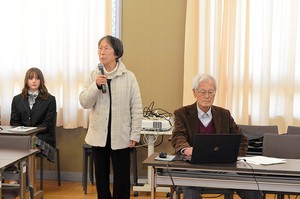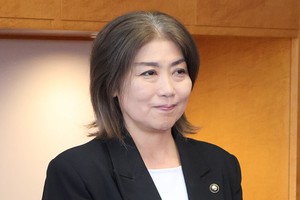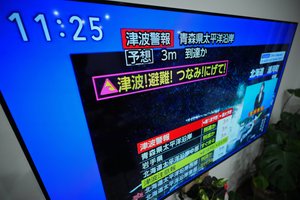By YOICHI YONETANI/ Staff Writer
January 26, 2024 at 15:40 JST
 A drone image taken on Jan. 22 shows the Wajima Asaichi market area in Wajima, Ishikawa Prefecture, reduced to ashes after a fire caused by the New Year’s Day earthquake. (Kazuhiro Nagashima)
A drone image taken on Jan. 22 shows the Wajima Asaichi market area in Wajima, Ishikawa Prefecture, reduced to ashes after a fire caused by the New Year’s Day earthquake. (Kazuhiro Nagashima)
The government is estimating that the Noto Peninsula earthquake caused damage to buildings and infrastructure totaling 1.1 trillion to 2.6 trillion yen ($7.44 billion to $17.59 billion) in the three hard-hit prefectures.
That is equivalent to 1 to 2 percent of all fixed assets held in Ishikawa, Toyama and Niigata prefectures, which are worth 146 trillion yen, according to data released by the Cabinet Office on Jan. 25.
By prefecture, Ishikawa was hit the hardest with an estimated loss of 0.9 trillion to 1.3 trillion yen, followed by Niigata with 0.1 trillion to 0.9 trillion yen and Toyama with 0.1 trillion to 0.5 trillion yen.
By the type of asset, damage to houses, factories and other buildings totaled 0.6 trillion to 1.3 trillion yen while infrastructure, such as roads and ports, worth 0.5 trillion to 1.3 trillion yen was lost in the magnitude-7.6 temblor on Jan. 1.
These are rough estimates based on seismic intensity in each municipality compared to data from past disasters, without adjustment for inflation and other variable factors.
In the 2011 Great East Japan Earthquake, the estimated damage to fixed assets totaled 16.9 trillion yen. The figure was 9.9 trillion yen for the 1995 Great Hanshin Earthquake and 2.4 trillion to 4.6 trillion yen for the 2016 Kumamoto Earthquakes.
Ishikawa Prefecture's economic output in fiscal 2020 stood at 4.5 trillion yen, accounting for 0.8 percent of Japan's gross domestic product.
In the hardest-hit areas of the prefecture, many electronics and semiconductor plants remain offline.
In Nanao’s Wakura Onsen spa resort, many hotels and inns have been forced to close, dealing a major blow to the local tourism sector.
The disaster’s impact on these economic activities has not been estimated.
The government unveiled on Jan. 25 a relief package for victims, including a tourism stimulus campaign to revive the local travel industry.
The program will subsidize half of the accommodation fees, up to a maximum of 20,000 yen per person per night.
The funding for the package will come from a 155.3 billion-yen contingency fund within the budget for the current fiscal year, which ends in March.




















A peek through the music industry’s curtain at the producers who harnessed social media to help their idols go global.
A series based on diplomatic documents declassified by Japan’s Foreign Ministry
Here is a collection of first-hand accounts by “hibakusha” atomic bomb survivors.
Cooking experts, chefs and others involved in the field of food introduce their special recipes intertwined with their paths in life.
A series about Japanese-Americans and their memories of World War II